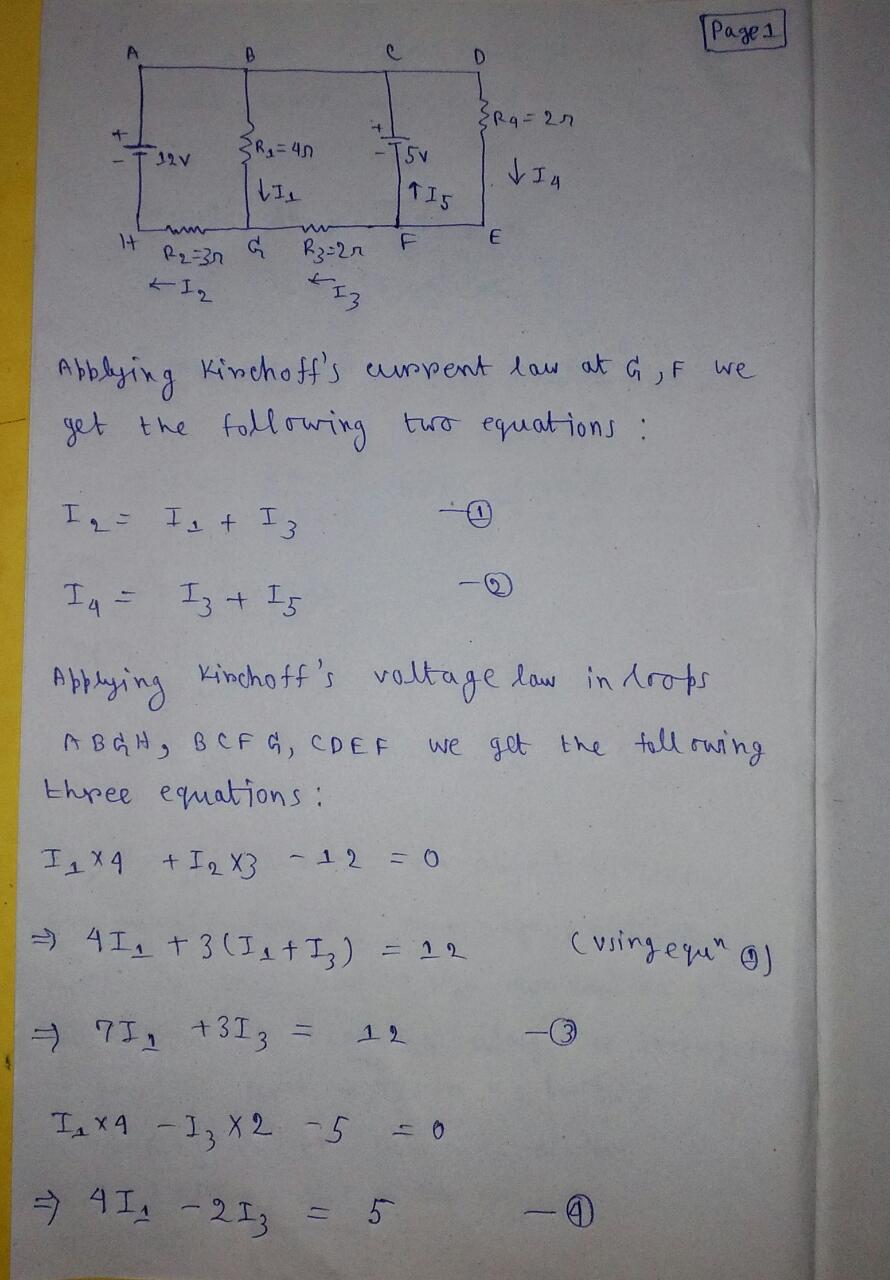College Physics
11th Edition
ISBN:9781305952300
Author:Raymond A. Serway, Chris Vuille
Publisher:Raymond A. Serway, Chris Vuille
Chapter1: Units, Trigonometry. And Vectors
Section: Chapter Questions
Problem 1CQ: Estimate the order of magnitude of the length, in meters, of each of the following; (a) a mouse, (b)...
Related questions
Question

Transcribed Image Text:The image depicts an electrical circuit schematic with resistors and power sources. The circuit consists of:
- A power source \( V_1 = 12 \, \text{V} \) connected in series with two resistors \( R_1 = 4 \, \Omega \) and \( R_2 = 3 \, \Omega \).
- A junction follows, leading to a parallel branch that includes \( R_3 = 2 \, \Omega \) connected in series with a second power source \( V_2 = 5 \, \text{V} \).
- Another branch diverges with \( R_4 = 2 \, \Omega \).
Arrows indicating currents \( I_1 \), \( I_2 \), \( I_3 \), \( I_4 \), and \( I_5 \) are drawn next to different segments of the circuit, showing the direction of conventional current flow.
The task is to calculate the potential differences across each resistor and determine the current flowing through each branch of the circuit using Kirchhoff's laws and Ohm's law.
Expert Solution
Step 1

Step by step
Solved in 3 steps with 2 images

Recommended textbooks for you

College Physics
Physics
ISBN:
9781305952300
Author:
Raymond A. Serway, Chris Vuille
Publisher:
Cengage Learning

University Physics (14th Edition)
Physics
ISBN:
9780133969290
Author:
Hugh D. Young, Roger A. Freedman
Publisher:
PEARSON

Introduction To Quantum Mechanics
Physics
ISBN:
9781107189638
Author:
Griffiths, David J., Schroeter, Darrell F.
Publisher:
Cambridge University Press

College Physics
Physics
ISBN:
9781305952300
Author:
Raymond A. Serway, Chris Vuille
Publisher:
Cengage Learning

University Physics (14th Edition)
Physics
ISBN:
9780133969290
Author:
Hugh D. Young, Roger A. Freedman
Publisher:
PEARSON

Introduction To Quantum Mechanics
Physics
ISBN:
9781107189638
Author:
Griffiths, David J., Schroeter, Darrell F.
Publisher:
Cambridge University Press

Physics for Scientists and Engineers
Physics
ISBN:
9781337553278
Author:
Raymond A. Serway, John W. Jewett
Publisher:
Cengage Learning

Lecture- Tutorials for Introductory Astronomy
Physics
ISBN:
9780321820464
Author:
Edward E. Prather, Tim P. Slater, Jeff P. Adams, Gina Brissenden
Publisher:
Addison-Wesley

College Physics: A Strategic Approach (4th Editio…
Physics
ISBN:
9780134609034
Author:
Randall D. Knight (Professor Emeritus), Brian Jones, Stuart Field
Publisher:
PEARSON